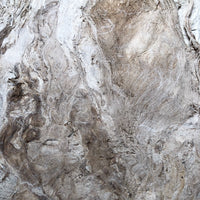We have already introduced how to make watercolors in PIGMENT TOKYO’s workshop courses and videos, but this time we will show you exactly what tools you need and how to use them.
We are spending more and more time at home these days, so it is a perfect time to have some moments and enjoy doing things you love, and maybe you will be inspired by these "art materials" and bring new ideas to your artworks.
Transparent watercolors are, as the name implies, paints that dissolve in water. This is one of the paints that we used in school when we were children.
So, what kinds of tools do we need to make watercolor paint? Let’s find out in the following article!

You can use any combination of tools to make watercolors, whether it is a crystal muller and a marble stone board, or a paper palette with a painting knife, so feel free to use whichever tool you like.
The key to choosing the right pigment is that coarseness of the particles, the rougher the pigments are, the more difficult to disperse evenly, on the other hand, the finer ones, it’s easier to knead them. So it is best to choose the right coarseness of the pigments according to your painting style and personal preference.
If you are using pigments for the first time, you may feel a bit lost when you are asked to choose from a large selection of types and colors. In this case, why don’t you start from picking your favorite color?
After all, the fun of art starts from choosing your favorite color and putting lots of love while making your own watercolor paint.
On the left side of PIGMENT TOKYO online shop page, there is a search function that includes color filters.
ITEMS【Pigments】
For those who are not yet familiar with pigments, or when in doubt, you can consider Suihi (tinted shell pigments), which has a large number of colors and a fine texture.
Please refer to the article below for more information about Suihi pigments.
You can also watch the actual watercolor making process in the video below.
Instagram LIVE "How to Make Watercolor Paints"
Therefore, here are the ways on how to make watercolor paints.

I used these pigments for making watercolors this time.
Kamakura-shu has fine particles, so I can use it directly. However, for granular pigments, such as Suihi, it is better to grind them well in a mortar or crush them into tiny pieces with the muller while kneading the pigments.
Then, knead the pigment well with a painting knife. If it seems too tough to knead at this stage, add some gum arabic.

There are three sizes of Crystal Muller available in PIGMENT TOKYO, but this time I used the largest one.
Large size mullers can be a little heavy to hold in one hand, but when you knead it with the pigments and the mediums since it contains gum arabic and honey, the muller moves smoother than you might think, so even a lady like me can use it without any problem!
The heavier the size, the more pressure is applied, so the pigments can be kneaded well. I recommend the larger size, especially if you are going to make a lot at once.

As a rough guide to the final result, knead the paint well while drawing figure “8” until it becomes glossy and smooth.
Remember, the more you knead, the better color the paint will be!

I want to try something new, so I added some gum arabic and honey directly into the mortar where I grind the pigments.
By the way, it is always easier to knead with a painting knife or crystal muller, and it is more visible to check the state of the paint, so do try the basic method first before starting something new.
Also, if you are putting the paints into containers or paint bottles, palettes or plates are easier to work with because you can easily scoop them up.
You can put the paints in any container you like, but if you decide to store them for a longer time, it would be better to use a container with a lid to prevent dust from getting in.
You can also put them in cute paint bottles to create your original paint collection, or even have your own labels on them!
Honey is an excellent substitute for humectant and fungicide, but if you add too much, it will hard to solidify and will remain liquid.
However, if you put too little, it may crack after it dries. The amounts of gum arabic and honey are listed in approximate proportions, but they will vary depending on the pigments.

Furthermore, you can also mix it with other pigments or add some Gofun(white shell pigments), titanium white, or effect pigments to change the color and saturation, so do give it a try!
At first, I too thought that making watercolor paints would be difficult, but once I tried it, I had a lot of fun and it’s quite a magical experience by creating my personal watercolor!
I hope that this unique journey of making watercolors will inspire you to find a new kind of color in your art!









